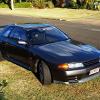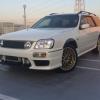Wideband Oxygen Sensor Installation
Announcements
-
Similar Content
-
Latest Posts
-
My first car was a HG. I'm very familiar with them. A mild cam upgrade is a good idea. The 186 is a very flexible engine - meaning it has good torque from down low. You can give up a little torque down low for quite a lot more excitement in the mid range, and a bit more up top - but they are not exactly a rev monster. You need to upgrade valve springs at the minimum. For a bigger cam, you'd want to make sure it wasn't still running the original fibre cam gear. That would be unlikely, given that most of them shat themselves in the 70s and 80s, but still within the realms of possibility. Metal cam gear required. Carbies are a huge issue. The classic upgrade was always a Holley 350, which works, but is usually pretty bad for fuel consumption. The 186S had a 2 barrel Stromberg on it that was very similar to the one on the 253, and is a reasonable thing if you can find one, and find someone to help you get it set up (which is the same issue with setting up a 350 to work nice). The more classic upgrade was twin sidedraught CD type carbs, or triples of same, or triple Webers. The XU-1 triple Webers being the best example. You can still buy all this stuff new, I think, but it's a lot of coin to drop. And then the people able to set them up are getting fewer and further in between. There's still some, but it used to be everyone's** dad and uncle could do it. **Not everyone's! But a lot. All in all, I wouldn't get too carried away with the engine. Anything you do to it without a full rebuild for power and revs will only make it slightly faster. I am all in favour of a complete teardown rebuild, with nice rods and pistons, 10 or 1.5:1 compression, and a clean port job with at least a big enough cam to run 98 with that compression, if not bigger. And if I did that to a dirty old red motor, I'd want to inject it too, which I'd struggle to fight against the devil on my shoulder that would argue for ITBs and trumpets. But the bills would start to mount up, and it will still never make stupid power. OK, a few people still know how to build absolutely mental red motors, courtesy of the work that went into HQ racing and modern knowledge being applied. But even a 300HP red motor is no match for an RB20 with a TD06. So you have to decide what it's worth to you. I'd just put a set of 6>2>1 extractors, a 2.5" exhaust and an electronic ignition conversion/dizzy on it and just run the old girl like the fairly slow old girl that she really is.
-
Thank you so much for the comments. This is very interesting and gives me some great ideas to think about. Keen to keep it simple and relatively classic looking. That said, i am not too worried about staying 100% period correct. A little extra performance and relatively good (or improved) economy is just what i am looking for. Ill be keeping any parts i swap out so if i get nostalgic i can always swap it all back in. Right now just trying to get some good ideas from people in the know (I still have a lot to learn in this space). Thank you again!
-
Wrt the engine, you're very much limited by 'production quality' as to how much extra power you can extract from them (I'm talking i6 red-motor) -- a lot here depends on how 'authentic' or 'period correct' you want the modifications to be... ...I'm too old... <grin>...the first true performance engine Holden made, was in the HD/HR models ~ this was the 'X2' performance pack...it came with twin downdraft strombergs on an otherwise unimproved intake manifold, with a two piece exhaust manifold (reckoned to be as good as extractors)... ....these engines were built upon the '179HP' cylinder block, which included extra webbing in the casting to make it stronger and less susceptible to block distortion... The next performance i6 came out with the HK Monaro (also found it's way into the LJ GTR Torana ... the car I wish I hadn't sold)...it had pretty much the same manifold setup, but was built against the '186S' block...this block retained all the extra webbing of the 179HP block, but added a forged steel crankshaft (instead of the stock cast crankshaft), because it was possible to snap the crank... ...apart from the inherent weaknesses in the stock (cast crank) blocks, the next limiting factor is the cylinder head porting & combustion chamber design, and the actual valve sizes. Back in the day, you could buy a 'yella terra' cylinder head (from stage 1 to stage 5 gradients), and this was the way to get serious power out of them -- with the extra breathing of these heads, you could fit a triple SU or DCOE Weber setup... ...obviously, these mods were a waste of time on a stock cylinder head/camshaft grind. My housemate rebuilt the i6 in his VH dunnydore about 6 months back -- this is a 186S block with the 12port 2850 blue motor head and intake/exhaust manifolds, with a dual throat Weber off an XF Falcon mounted on an adapter plate ; it's not a bad makeup...got more torque & fuel economy just light-footing it about on the first throat, but stand on it and it makes more giddy-up than the standard 2850 blue motor that it replaced. Personal note: I'd just fit an RB30 and be done it it 😃
-
Thanks for sharing. That's a great video! My buddy is doing the same thing on his build (S chassis struts and towers). He's building an S14 with billet RB30 shooting for 2000whp... a race car with a TH400 just like this video. For a road car I just couldn't go this route as the strut has to be almost vertical and the caster is not going to pivot correctly (let alone camber gain). You think the R32 frontend is bad, wait till you put a MacPherson strut on without modeling it all in Solidworks to check geometry. I'm not saying it's a bad way to do it but I'd be really curious to see how it affects the geometry.
-
Hey Christof and welcome! Sounds like an awesome project! I'm not sure many of the regular users on here would know much about the HK but I could be wrong. Looking forward to updates.
-








Recommended Posts
Create an account or sign in to comment
You need to be a member in order to leave a comment
Create an account
Sign up for a new account in our community. It's easy!
Register a new accountSign in
Already have an account? Sign in here.
Sign In Now